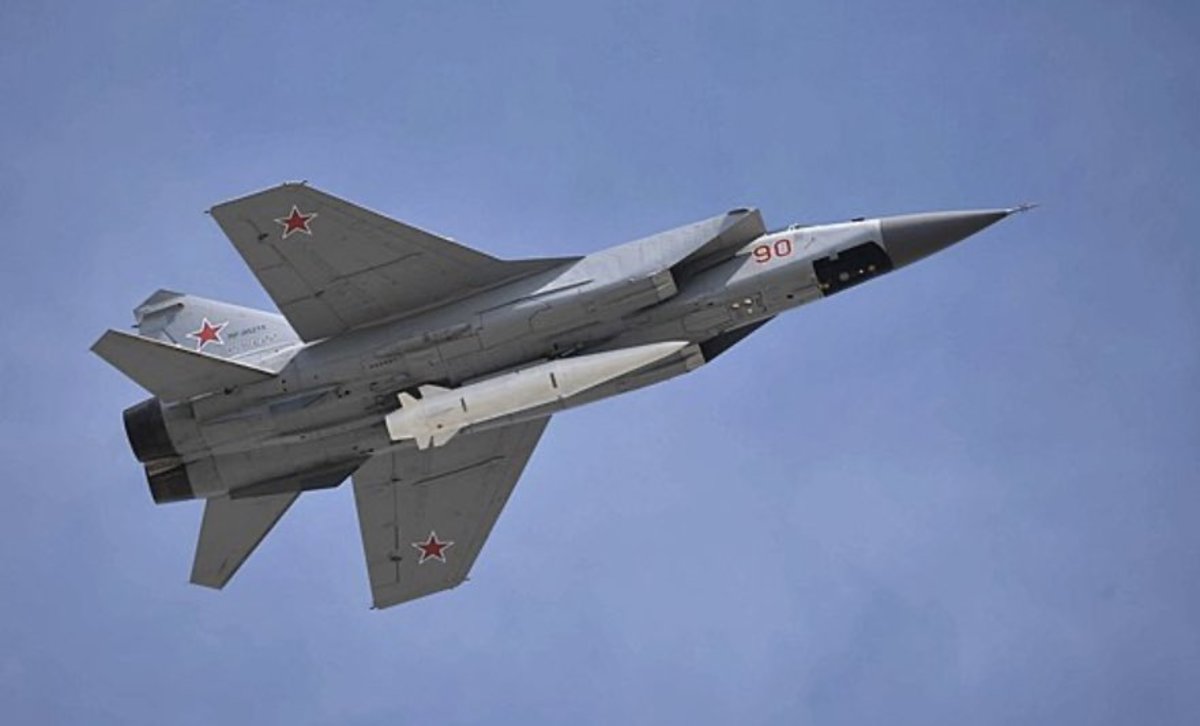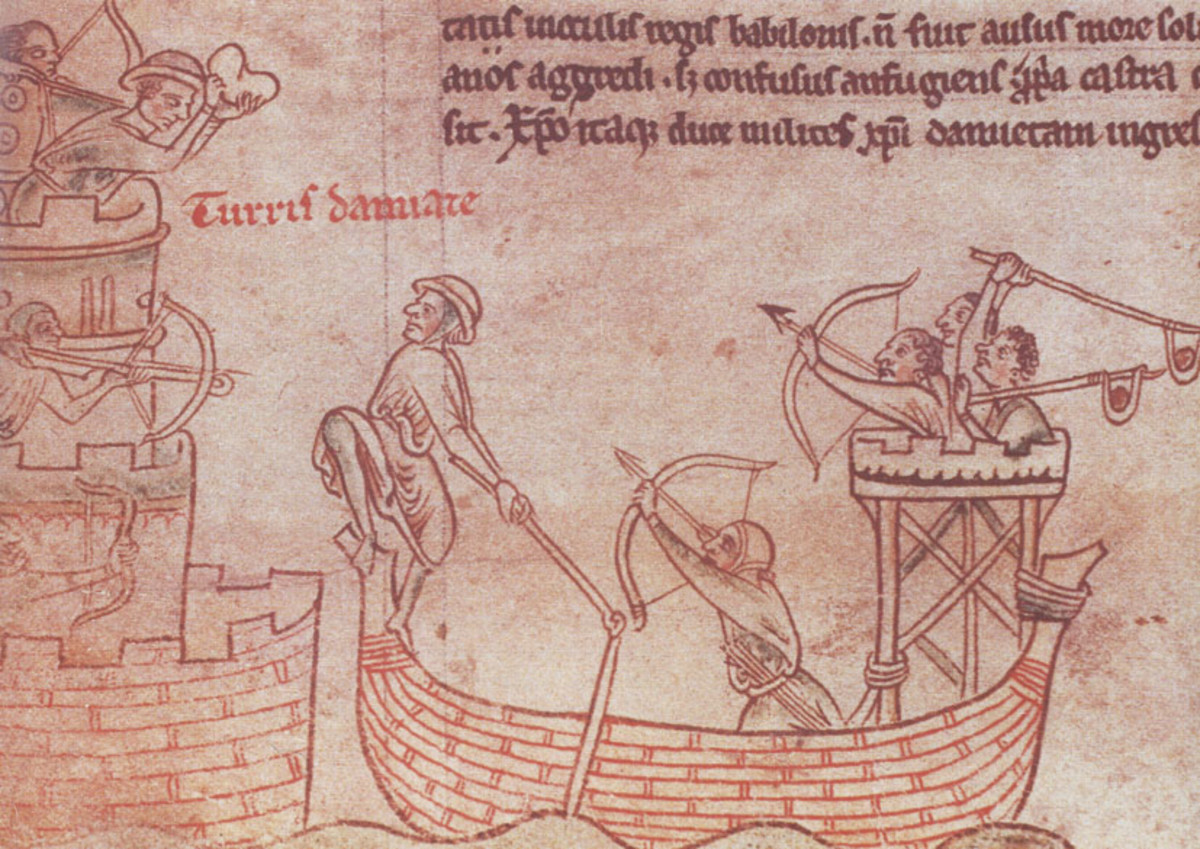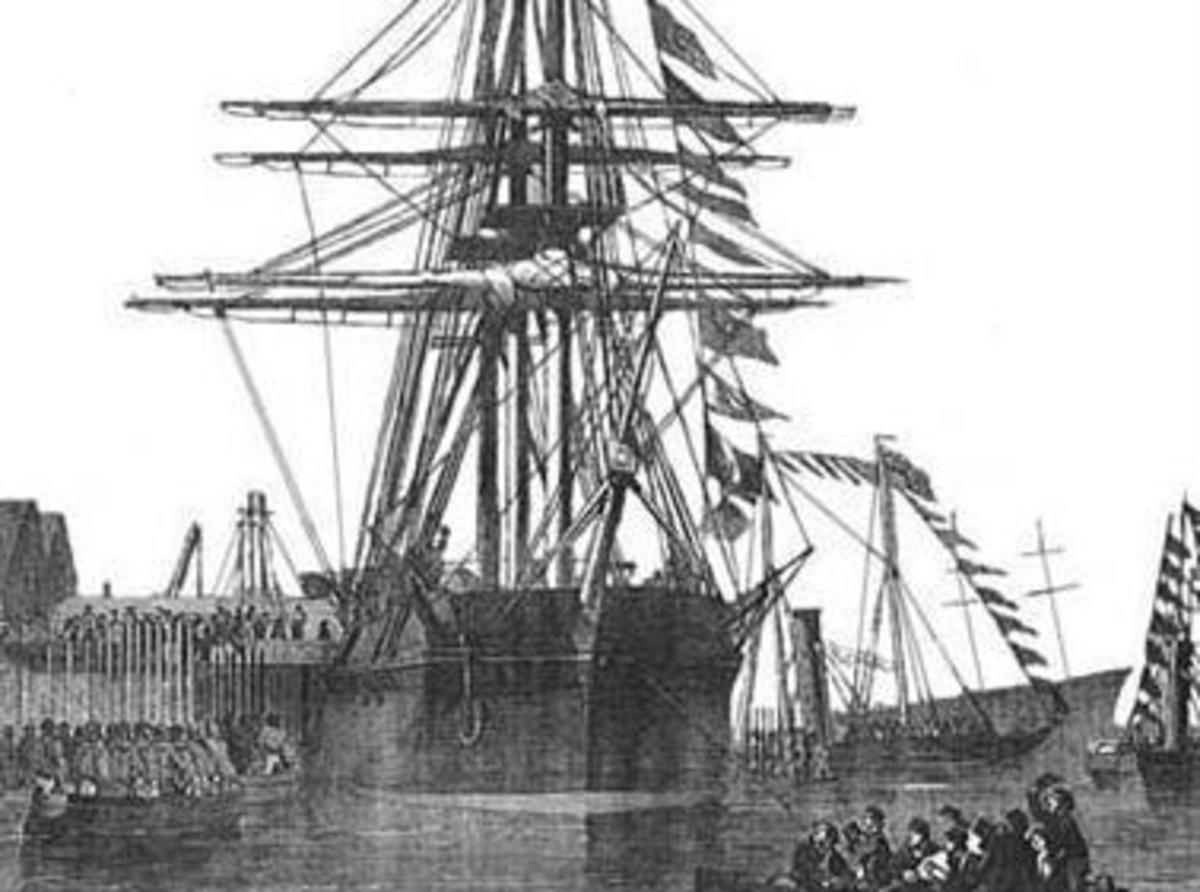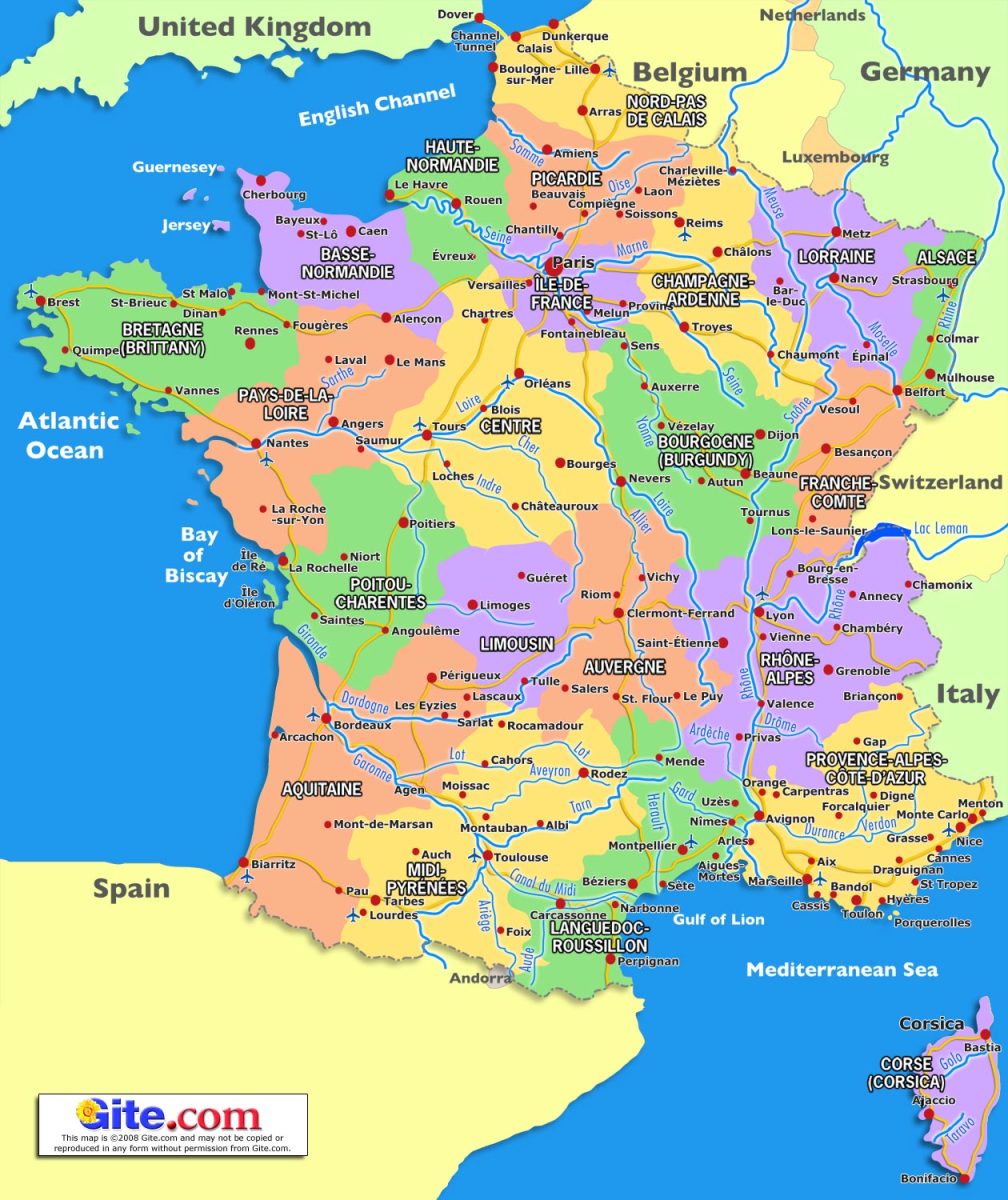Medieval Weaponry - Projectile Weapons
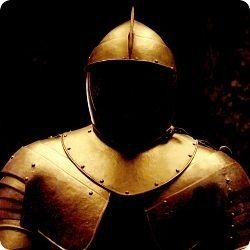
The Slings and Arrows of The Medieval Warrior
A projectile weapon is quite simply any weapon that lobs an object at the enemy. While technically that covers most siege engines, and indeed canons, we won't be covering those in this article as its already been discussed in previous editions of this series. Projectile weapons we will be convering in this edition will be bows, slings, throwing weapons, and similar weaponry.
In medieval warfare, as in modern warfare, the further away you can hit and take your enemy out of play, the more likely you are to win. This has been a military strategy used in warfare since the caveman picked up a rock and thew it at an approaching enemy. Technology of the projectile weapon increased at a blinding pace during the medieval era, from simple bows and slings in the early medieval times to advanced gunpowder weapons of the late medieval times.
This is part III of an ongoing series of articles on Medieval Weaponry and Warfare
Throwing Your Weapon Away - Axes and Throwing Knives
There is considerable debate amongst scholars as to if thrown weapons were actually ever really used. From a logical standpoint why would anyone throw away their weapon, especially considering there was a darn good chance you'd never get it back. There is very little evidence that throwing knives or throwing axes were every used in battle.
In the Norse saga's, pretty much THE source for any viking history, there are relatively few mentions of axes (vikings preferred weapon) ever being thrown, and most are as a last ditch effort. The only one that seems to support axes being thrown as part of a military strategy comes from Olafs saga helgi which discusses the battle at Stiklastaoir from 1030 CE in which a scene is described where the rear rank of men used stones arrows and threw axes.
While there is some evidence occasionally soldiers would have knife throwing competitions amongst themselves, there is no evidence i have ever come across that knives were thrown in battle in the Western World. There is some evidence of various throwing knives and such in Japan.
Despite the lack of evidence I highly recommend you try out thrown weapons if you ever get the chance. Throwing axes is quite a bit of fun as long as the proper safety precautions are followed.
The Javalin
Javelin throwing is an olympic event, and that's pretty much all the exposure to the javelin most people ever get, however the javelin was a highly effective throwing spear. In the right hands it could be thrown amazing distances and hit with greater force than arrows.
Slings
Slings were probably the most rudimentary of projectile weapons. Simple to make, deadly, easy to use, but very difficult to master. The story of David and Goliath from the bible is probably the single most recognizable use of a sling as a weapon.
In the right hands the sling was accurate, powerful, and very deadly. The Romans had specialized surgical weapons for removing glands (the missiles shot from slings) from a person through armour, so from that we can extrapolate that a gland shot by a slinger could penetrate roman armour.
The main drawback to slings is the training required to master it. A bow takes considerable less time to become relatively accurate with, and while a sling is cheaper to make, if you can have men trained faster you end up with a larger force. Despite this the sling continued to be used militarily right up to the Spanish-American War, and today protesters still often use a sling as a weapon since anyone can easily make one, and while accuracy takes practice if you are shooting at a line of police you have a relatively good chance of hitting at least one.
I myself own several slings, i have made each one trying out different construction techniques to find the ideal sling. The power they transfer is impressive, but control is something that takes considerable effort. I can throw at least twice the distance with the sling as I can without it and I do not have any real skill as of yet, however those who master the skill can get astonishing power.
Bows and Crossbows
Archery was the big daddy of single man projectile weapons of the middle ages. The stored energy in a bow could toss an arrow much further, and with considerably more force (eventually) than either a javelin or a sling. The technology behind bows and crossbows is staggering. Most people think only of the long bow and the crossbow when considering archery, but in reality there were many other forms of bows available to the medieval soldier. The Huns had some very efficient horseman bows of very unusual design, and most of Europe favoured recurve bows over the English longbow for their smaller size.
Despite the fact that the crossbow is considered to be the pinnacle of medieval archery technology, there is considerable debate over if it truly was a more effective weapon or not.
Recurve
The Recurve is by far the most common style of traditional bow, even to this day. It gets its power from its shape. While the hun horseback bow is also a recurve, the two belong in different categories due to the vast differences in technology.
The Hun Invasion - Bow From Horseback
The Hun had an advantage over most European nations of the time, they shot their bow from horseback. Most bows were to large and awkward to shoot from horseback, the Hun had some tricks up their sleeve.
One such trick was the stirrup which enabled them to stand up from horseback, something that Europeans hadn't considered until the Huns brought the technology from Asia.
The other was the very design of their bow. It was a recurve, like most of the other bows of the time, however it was smaller than any other, but still as powerful. The composite design of the bow allowed for more strength and flexibility than you would normally be able to get out of a traditional recurve bow. The bow was made by layering horn wood and sinew rather than the traditional method of different types of wood.
The Longbow - The Legendary Bow of Robin Hood
The English Longbow is a unique beast, even more so than the hun horseback bow. Unlike its recurve cousin it has absolutely no curve to the design, when unstrung it is a straight stick, but its design makes it extremely effective. Traditionally a longbow is not laminated, it has only one type of wood, Yew, however it uses both the soft and pliable heartwood and the harder stiffer hardwood. This allows the longbow to take advantage of the effects of composite bows without the complicated manufacturing process.
The longbow was the bow that Robin Hood would have used (assuming he was actually English and the time period is assumed to be when Richard III was on crusade and his brother Prince John was in charge). As such it has attained legendary status in popular culture. More than this though it is owed its place in history for its sheer power. As crossbows increased in popularity bows began to fade, England however held firm in the belief that the longbow was much better than the crossbow. At Againcourt their belief was vindicated when they beat back the French despite being outnumbered. The longbow proved that it was more powerful and could fire more volleys per minute than the crossbow could ever manage. Eventually Crossbows were able to match, if not match the longbow for power, but they could never beat the longbows rapid fire ability.
The Crossbow
The crossbow is considered by most to be the penultimate projectile weapon of its day, and in many ways this is true. The longbow may have had the advantage of rapid fire, and it may have even matched or beaten the power of the crossbow, but the crossbow had one advantage the longbow could never attain, time.
The longbow was doubly hampered temporally speaking. On one hand it was painstaking to make, it took years and an infinitely skilled bowyer. Then there was the training, a yeoman spent years practicing the bow, England actually had to pass laws that made it mandatory for every male to spend hours a day practicing with a longbow so that when war came they'd have trained soldiers ready. While England had ways of dealing with these difficulty the fact remain the crossbow did not have this issue.
The crossbow could be manufactured on mass, it wasn't a terribly complicated device and it didn't take specialized aged wood, in fact I've gathered some plans on how to make crossbows. A little wood, some steel and the know how and you could produce several crossbows a day. Then there was the ease of use, while a longbow took years of training, a crossbow could be shown to a man and he could competently use it hours later. It wasn't nearly as accurate as the longbow, but it didn't need to be, when you could field ten times as many trained crossbow as the enemy could field longbowmen you could rain crossbow bolts on them from the heavens in such a mass that accuracy was not at all relevant, as long as the bow went somewhat in the right direction it did the trick.
© 2012 Jeff Johnston






